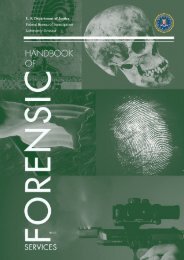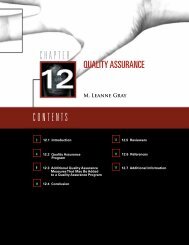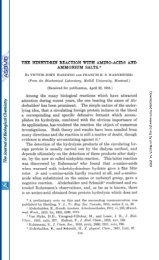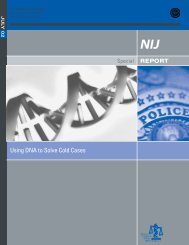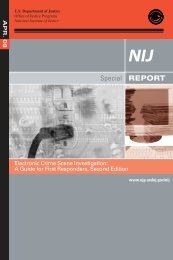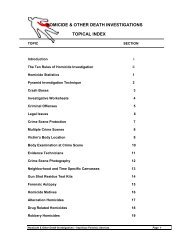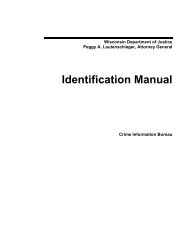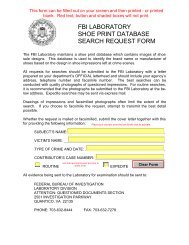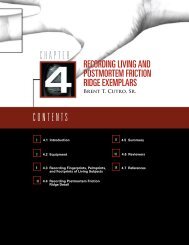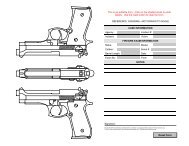Mass Fatality Incidents: A Guide for Forensic Identification
Mass Fatality Incidents: A Guide for Forensic Identification
Mass Fatality Incidents: A Guide for Forensic Identification
- No tags were found...
Create successful ePaper yourself
Turn your PDF publications into a flip-book with our unique Google optimized e-Paper software.
SPECIAL REPORT / JUNE 05III. Commence Print ProcessingPrinciple. In conjunction with the medicalexaminer/coroner, the fingerprint examineris responsible <strong>for</strong> processing remains in anef<strong>for</strong>t to record friction ridge skin <strong>for</strong> thepurpose of identification.Procedure. When processing remains <strong>for</strong>fingerprints, palm prints, and footprints,the fingerprint examiner is expected to—A. Initiate and maintain anexamination/activity log.B. Record and verify available identifyingdata (e.g., body number, basicdescriptors).C. Photograph remains/friction ridge surfacesbe<strong>for</strong>e processing.D. Examine <strong>for</strong> and collect trace evidencefrom friction ridge surfaces.E. Prepare friction ridge skin <strong>for</strong> printing.F. Obtain authorization from the medicalexaminer/coroner be<strong>for</strong>e removing fingersor hands:1. Label all removed body partsimmediately.2. Ensure that all labeled body partsare reassociated with the appropriatebody.G. Print all available friction ridge skin onhands and feet.H. Document the fingerprint examinationprocess:1. Record the name of the fingerprintexaminer (printed and signed) anddate of examination on the fingerprintcard.2. Document and log the number(s)assigned to the body/remains (includingdesignation and descriptors)on the fingerprint card.3. Document friction skin area recordedas well as areas not available orunsuitable <strong>for</strong> recording.It may become necessary to fingerprint survivorsof the incident <strong>for</strong> exclusionary purposes.Summary. When processing remains <strong>for</strong>identification, the fingerprint examiner isexpected to record friction ridge surfacesprinted, document the processes employed,and maintain legible and accuraterecords.IV. Conduct Comparison and<strong>Identification</strong>Principle. The comparison of antemortemfingerprint records with those obtaineddirectly from the remains by the fingerprintexaminer may lead to the positiveidentification of the deceased.Procedure. Upon obtaining the antemortemfingerprint records of potentialmass fatality incident victims, the fingerprintexaminer is expected to—A. Compare antemortem with postmortemprints.B. Identify a second qualified fingerprintexaminer to verify all identifications(consistent with discipline standards)and document the findings on thepostmortem card.C. Initiate automated fingerprint identificationsystem (AFIS) searches in availabledatabases if no antemortemprints are present.D. Notify the medical examiner/coroner ofeach identification in a timely manner.34




